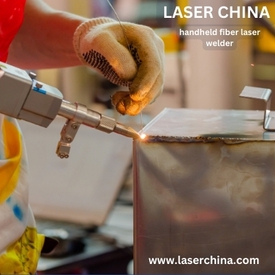Handheld fiber laser welders have revolutionized precision welding, offering unparalleled control and efficiency in various industries, from automotive to electronics. This guide aims to provide a detailed understanding of handheld fiber laser welder, their operation, applications, and essential tips for mastering this advanced welding technique.
Understanding Handheld Fiber Laser Welders: Handheld fiber laser welders utilize fiber optics to deliver a concentrated beam of laser energy, enabling precise and efficient welding of metals and alloys. Unlike traditional welding methods, fiber laser welding minimizes heat-affected zones, reduces distortion, and ensures superior weld quality.
Key Components:
- Laser Source: The heart of the handheld fiber laser welder, producing a high-intensity laser beam.
- Fiber Optic Cable: Transmits the laser beam from the source to the welding head with minimal loss.
- Welding Head: Houses the focusing optics and nozzle, directing the laser beam onto the workpiece.
- Cooling System: Maintains optimal operating temperatures for the laser source and other components.
- Control Interface: Allows operators to adjust welding parameters such as power, pulse duration, and frequency.
Applications: Handheld fiber laser welders find extensive use in industries requiring precision welding, including:
- Automotive: Welding automotive components with tight tolerances and complex geometries.
- Electronics: Joining delicate electronic components without damaging heat-sensitive materials.
- Aerospace: Fabricating lightweight structures and components with high strength-to-weight ratios.
- Medical Devices: Welding medical instruments and implants with precision and biocompatibility.
- Jewelry: Crafting intricate designs and repairs with minimal heat distortion.
Mastering Handheld Fiber Laser Welding:
- Optimize Parameters: Experiment with power, pulse duration, and focal length to achieve optimal weld penetration and quality.
- Practice Technique: Maintain steady hand movements and consistent travel speed to ensure uniform weld bead formation.
- Workpiece Preparation: Cleanliness is crucial; remove contaminants and oxide layers from the workpiece surfaces to achieve strong welds.
- Safety First: Wear appropriate protective gear, including laser safety glasses, to prevent eye damage from the intense laser beam.
- Regular Maintenance: Keep the equipment clean and well-maintained to ensure consistent performance and longevity.
Conclusion: Handheld fiber laser welder offer unparalleled precision and efficiency in welding applications across various industries. By understanding the fundamentals, optimizing parameters, and practicing proper technique, operators can master this advanced welding technology and unlock its full potential in their respective fields.




